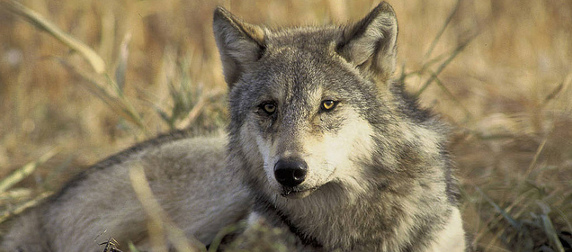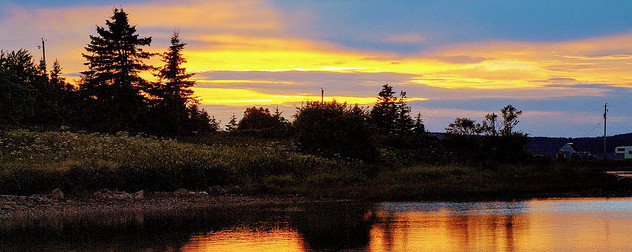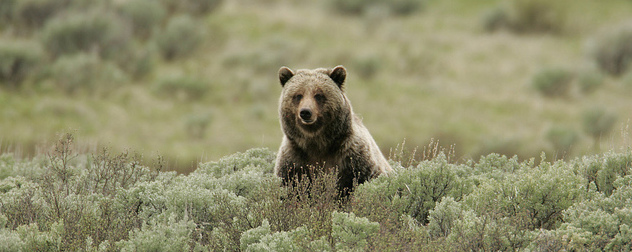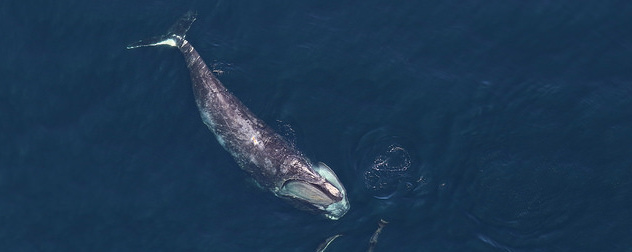Drought, fires, earthquakes, mudslides, traffic: Anxiety-prone Californians have plenty to worry about. Now we can add one more entry to the list - wolves.
After a very long absence, wolves are back in the Golden State. Not many of them, to be sure, and not in very many places, and not in places where very many Californians live, but still, there they are. And if the past 20 years of wolf recovery in the northern Rockies have shown us anything, it is that if you give a wolf a ridge, it is probably going to take a whole mountain range. Maybe a whole continent, given long enough.
So should Californians be concerned? I would say yes, if the Californians in question happen to be cows or sheep, and especially if they live somewhere other than the heavily urbanized coastal strip that runs from the San Francisco Bay area south to Mexico. But since that strip is where most of the people live, and mostly human beings have little to fear from wolves, I wouldn’t spend much time worrying about wolves if I lived, say, among the millions of Californians in Los Angeles.
What if you’re an Angeleno who wants to worry about wildlife? Your time is better spent focusing on mountain lions, which are more solitary and have adapted well to living in and around urban areas. The old story about a mountain lion is that you don’t know it’s in the neighborhood until it’s standing on your back.
Even domestic dogs are a much more statistically supported threat for North American humans. Healthy wolves tend to avoid people, especially in large groups, and there were only 18 verified wolf attacks on humans in North America during the entire 20th century, resulting in two fatalities (both rabies-related). By comparison, grizzly bears killed 71 people in that period; mountain lions killed 17. And traffic accidents killed 3,000 people in California alone in 2013.
Wolves are considered one of the great wildlife restoration success stories of the modern environmental movement. When I lived in Montana in the 1970s and early ‘80s, the nearest resident wolves were up in Canada, though an occasional tourist wolf would visit the Glacier National Park area. On the whole, though, no permanent gray wolf packs were known in the western United States between the 1930s and the mid-1980s.
Gray wolves became a protected species in 1974, under the Endangered Species Act, and the federal government appointed a team to oversee the reintroduction of wolves in the northern Rocky Mountains. The development of a specific recovery plan, an evaluation of environmental impact and legal evaluation of objections to the plan took until 1995. However, in the two decades that followed, the U.S. Fish and Wildlife Service has reported success that far exceeded expectations.
The Service re-established three main populations of wolves: northwestern Montana, central Idaho and the “Greater Yellowstone Area.” The recovery goal was 10 breeding pairs of wolves and 100 wolves total in each of these regions; by the end of 2008, the populations had all exceeded the minimum goals for four consecutive years or more. Today, while gray wolves are still listed as endangered in much of the country, the Northern Rocky Mountain population (including Wyoming, eastern Washington state, eastern Oregon and north central Utah, in addition to Montana and Idaho) has been delisted due to its remarkable recovery.
All this success came at a cost. Wolves like steak and lamb chops as much as the next guy, or maybe a little bit more. The ranchlands on the plains and in the valleys bordering wolf habitat look a lot like a buffet. But wolves aren’t that fussy about the source of their meat. They also happen to be highly territorial. Dogs that encounter a wolf pack are in serious trouble, even if the dog in question is in its owner’s own backyard.
Livestock predation was a predictable, and widely predicted, consequence of restoring wolf populations. Programs have been developed to manage the losses and to compensate farmers for the economic damages. But still, a fair number of people who live near wolves today are not thrilled by the prospect. Cash payment is small compensation when you have to tell your kid that Snuffy, the beloved family pet, will not be coming home tonight.
And while wolf attacks on humans in North America are exceedingly rare, they are not completely unheard of. They are also slightly more likely when wolves become habituated to people, especially due to misguided but well-meaning people who feed them purposely. Even so, as rare as attacks are, I wouldn’t spend any more effort worrying about them than I would spend on worrying about getting hit by lightning or drafted at my age for military service. But it could happen.
Lots of people, myself included, are very happy that wolves are doing well in this country. They are evidently doing so well that they are striking out on their own for new territory, in California and elsewhere. Some of the people who are pleased by this success live in places where they might actually see a wolf someday. Most of us, however, do not.
California still has not recovered the wildlife diversity it once boasted. Just take a look at the state flag and observe the grizzly bear. The so-called “California golden bear” has not been seen in California since 1924. Last year, the U.S. Fish and Wildlife Service received a petition to reintroduce grizzlies to the state. Even if the petition succeeds, however, any reintroduced bears would have to be Rocky Mountain grizzlies, a different subspecies closely related to the now-extinct California variety.
I wouldn’t hold my breath for the bears to arrive, and I wouldn’t worry much about the grizzlies even if they did. But hey - anything can happen in California.















August 31, 2015 - 5:38 pm
I am a California resident who grew up in Montana. I still have a home in Montana just outside Yellowstone Park. Having lived in wolf territory I fully understand the reasons wolves were removed from populated areas in the lower 48 states – they are very destructive and difficult to manage. There is not one legitimate reason why wolves need to be in California. Montana state senator Joe Balyeat commissioned a study showing wolves cost the state over $10 billion in management costs and lost revenue from wildlife hunting after wolves wiped out large numbers of elk in Montana. The Northern Yellowstone elk herd dropped from 22,000 to 3,500 after wolves were introduced to the area. There are very few moose left in the Yellowstone area. In Siskiyou County, Roosevelt elk hunting is limited to special drawing hunts due to the small population of elk in the area. Wolves will decimate the Roosevelt elk population in Northern California, and anywhere else they roam. Wildlife concerns aside, its hard to put a price tag on the way people’s lives are disrupted in wolf country. Ranchers are never compensated for weight run off their herds when wolves are around. They aren’t compensated for all the cost associated with wolf risk reduction. They aren’t compensated for sleepless nights. Local residents aren’t fully compensated for pet depredations. Wolves are a nice idea for people who live in urban cities and a terrible idea for people who have to live with them. I learned that first-hand in Montana. Wolves and grizzly bears are beautiful animals who belong in wilderness areas far from any human populations.
September 14, 2015 - 11:41 am
Wolves are not the reason for elk, moose or other ungulate population declines–the decreases have been attributable to disease and other suspected reasons–ESPECIALLY in areas where there are no wolves. IF a wolf pack kills an ungulate, it is most often the weak, sick, and/or least genetically strong specimen.
Wolves do not cost $10 Billion–if anything, they contribute to revenues via tourists trying to get a glimpse of a wolf. Are we supposed to sympathize with sport and trophy killers because they don’t make the draw or the kill?
Ranchers and pet owners should NOT leave animals in harms way. It’s akin to “baiting,” whether it’s wolves, mountain lions, coyotes, bears, etc. They’re lucky to be compensated at all if it was a verified covered predator kill. Even then, the livestock that’s put in harm’s way, that may be killed by a predator, is often sick or diseased in the first place.
Wolf recovery brings far more benefits to healthy ecosystems than detriments.